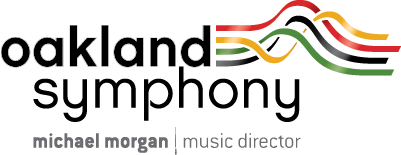Arriving improbably like an Alaskan summer solstice day in mid-November, Friday night’s Oakland Symphony concert, Notes from Korea, was luminous. Darkness or any inner sense of gloom carried into the gorgeous glow of the Art Deco style Paramount Theater vanished as the orchestra with Music Director Michael Morgan led into works by Gabriel Fauré, Edvard Grieg, and two young, rising star Korean-America composers, Texu Kim and Jean Ahn.
Following a tender, pleasingly paced reading of Fauré’s courtly Pavane in F-sharp minor, Op. 50, the orchestra, joined by Korean pianist Changyong Shin, was all business. From the first rumble of the timpani and the short cascading passage that began Grieg’s Piano Concerto in A minor, Op. 16, a vigorous, shimmering exchange between orchestra and soloist commenced.
Shin earned his Bachelor of Music from the Curtis Institute of Music and a Master’s degree in Music from The Juilliard School; training that informed his understated performance style and impeccable, sensitive approach to the work’s complexities. Allowing for breadth within transitional phrases and often between individual notes, Shin’s playing suggested sweet reluctance, as if leaving one note for the next was both loss and gain and not to be ignored. The orchestra, alternately rigorous, lush, dramatic and declarative throughout the first movement, mirrored Shin’s interpretation. Allowed to exhale during the adagio, Shin’s restraint — never constrained — revealed the movement’s subtlety and created an ideal platform for what was to come. Expectedly in the final movement, sparkling, show-off cadenzas for Shin and charming or virtuoso skirmishes with the orchestra found the concerto’s Romantic era centerpiece and led to
a brisk, climactic finish.
If the evening’s first half was lit by nostalgia and the familiarity of works frequently performed by orchestras, the second half was invigorated by fresh voices reminding the audience that classical music can be both serious and fun. Kim’s Dub-Sanjo drew upon Korean folk music origins—the multi-movement sanjo typically runs 30-60 minutes, with vocal, single instrument and percussion delivering its distinct melodic phrasing and tempi. Abbreviated to eight minutes and combined with the orchestra’s multi-part textures and harmonies, violin, viola and cello players slapped their instruments as often as they used bows. Cymbals, xylophone, wood boxes and timpani struck with bamboo mallets lent to the work’s cross-cultural sound.
Ahn introduced The Woven Silk for haegeum and orchestra, speaking first in Korean to describe the two-string instrument whose inner and outer silk thread strings produce a remarkable range of sounds. Heard by someone who does not speak or understand Korean and therefore the words devoid of meaning, consonants framed her song-like, melodic voice, a suitable precursor for the work’s similar textures and structure.
Elegantly dressed in a traditional, flowing green gown, guest soloist Soo Yeon Lyuh’s sensitive use of the haegeum brought to mind human voices, bird songs, and other animal sounds — rustled leaves, the slap of a fish in water and more. With percussion an interruptive force, the work gained tension and dynamic range from peaceful to protest.
Kim’s brief Blow, Fly, Pop!! had the orchestra blowing bubbles, popping balloons, rattling sheets of plastic and striking a large purple exercise ball with drumsticks, along with bold pronouncements performed using more traditional instrumentation. To quote Morgan’s prediction for the audience’s departure that proved accurate: “You will go smiling into a world where smiling is hard to come by sometimes.”
